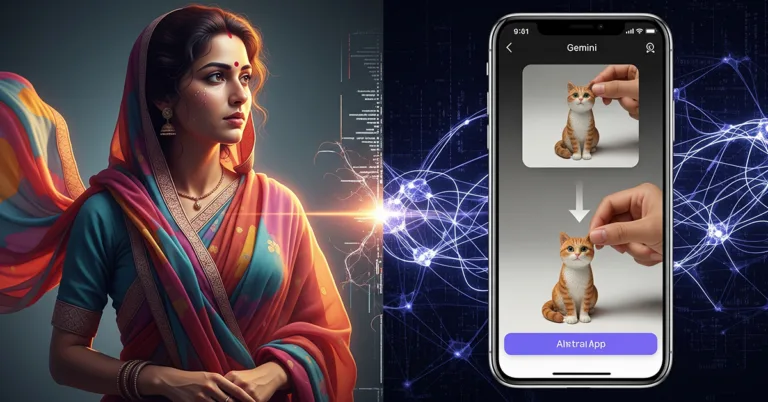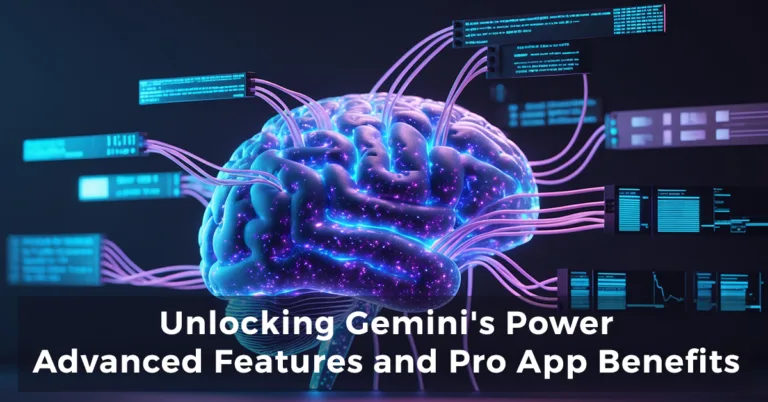- Introduction – The Rise of AI in Coding
- Understanding AI in Coding
- What is Vibe Coding?
- How to Use AI for Coding in Application Development
- 6 Best AI Coding Platforms in 2025
- GitHub Copilot
- Cursor AI
- ChatGPT (Code Interpreter & GPT-4/5 with Plugins)
- Amazon CodeWhisperer
- Tabnine
- Replit Ghostwriter
- Which AI is Best for Coding?
- Applications You Can Build with AI Coding Tools
- Pricing – Are They Free?
- API Pricing and Usage Limits Explained
- Pros and Cons of Using AI for Coding
- Future Trends in AI Coding
- Conclusion – Choosing the Right AI Coding Platform for You
Introduction – The Rise of AI in Coding
Why AI is changing the way we code
Artificial Intelligence is no longer just a futuristic buzzword — it’s now embedded in the way we create, optimize, and maintain code. AI-powered coding platforms have transformed programming from a purely manual skill into an intelligent, collaborative process. Instead of starting from scratch, developers can now use AI to generate, complete, debug, and even optimize their code in real time.
This shift has reduced development cycles, improved accuracy, and opened coding opportunities to non-programmers through intuitive AI-powered tools.
The problem with traditional coding and how AI solves it
Traditional coding requires hours of manual typing, researching documentation, and debugging errors. Even the most skilled developers can spend days solving bugs or writing repetitive code. AI solves this by:
-
Offering instant code suggestions
-
Providing context-aware autocompletion
-
Explaining code in plain English
-
Debugging and optimizing automatically
In short, AI doesn’t just speed up coding — it changes the entire development workflow.
What you’ll learn in this article
By the end of this guide, you will:
-
Understand what vibe coding means and how it works.
-
Discover the 6 best AI coding platforms in 2025.
-
Learn how to use AI for coding in application development.
-
Compare pricing and features so you can choose the right tool for your needs.
-
See what types of applications you can build with AI coding tools.
Understanding AI in Coding
What is AI-assisted coding?
AI-assisted coding is the use of artificial intelligence to support, enhance, or automate the process of writing software. Instead of manually crafting every line, you collaborate with AI that understands natural language prompts and can write code in multiple programming languages.
The difference between AI code completion and AI code generation
-
AI Code Completion: Suggests or finishes lines of code as you type (e.g., Tabnine, GitHub Copilot).
-
AI Code Generation: Creates complete scripts or applications from scratch based on your description (e.g., ChatGPT with Code Interpreter, Replit Ghostwriter).
Key benefits of using AI for coding
-
Speed – Complete projects in hours instead of weeks.
-
Accuracy – Fewer syntax errors and cleaner code.
-
Learning – Great for beginners to understand coding patterns.
-
Productivity – Automates repetitive coding tasks.
Limitations and challenges of AI in coding
-
Accuracy depends on input – Poor prompts lead to poor results.
-
Over-reliance risk – May weaken your problem-solving skills.
-
Security concerns – Generated code must be reviewed for vulnerabilities.
What is Vibe Coding?
Origin and meaning of “Vibe Coding”
Vibe coding refers to a creative, flow-driven approach to programming where the focus is less on strict planning and more on iterating rapidly with AI tools. It’s like having an “AI jam session” with your code.
How vibe coding differs from traditional development workflows
Traditional coding follows a strict plan. Vibe coding is exploratory, where AI helps you experiment quickly and pivot when needed.
Real-world examples of vibe coding in practice
-
Prototyping a game idea in a single afternoon.
-
Creating a chatbot without deep backend knowledge.
-
Designing UI components on the fly with AI-generated code.
Tools and environments that support vibe coding
-
Replit Ghostwriter
-
GitHub Copilot
-
ChatGPT (Code Interpreter)
-
Figma + AI Plugins for front-end generation
How to Use AI for Coding in Application Development
Step-by-step guide to getting started
-
Pick your AI platform – Choose based on your project type.
-
Write clear prompts – Include details like language, framework, and function purpose.
-
Review & test code – Never deploy without validation.
- Iterate with feedback – Ask AI to optimize or refactor.
How to choose the right AI platform for your needs
-
For web apps → GitHub Copilot, Replit Ghostwriter.
-
For mobile apps → ChatGPT + Flutter integration.
-
For AWS-based projects → Amazon CodeWhisperer.
Integrating AI tools into your workflow
AI works best when paired with:
-
Git version control
-
Automated testing
-
CI/CD pipelines
Common mistakes to avoid when using AI for coding
-
Blindly trusting AI-generated code.
-
Giving vague instructions.
-
Not understanding the output before deploying.
If you’re serious about improving your AI-assisted coding, read our guide on Prompt Engineering: Mastering the Art of Communicating with AI.
6 Best AI Coding Platforms in 2025
GitHub Copilot
Overview:
GitHub Copilot, developed by GitHub in collaboration with OpenAI, is one of the most popular AI-powered coding assistants. It integrates seamlessly into major code editors like Visual Studio Code, JetBrains IDEs, and Neovim. It uses the Codex model to provide context-aware code completions, suggest entire functions, and even help generate boilerplate code.
Key Features:
-
Real-time inline code suggestions while typing.
-
Can interpret comments written in plain English and generate matching code.
-
Supports dozens of programming languages including Python, JavaScript, TypeScript, Go, and C++.
-
Helps write unit tests, refactor code, and generate documentation snippets.
Pricing:
-
Individuals: $10/month
-
Business: $19/month per user
Best For:
Beginner to advanced developers looking for productivity boosts and fast code scaffolding. Ideal for web development, data scripting, and rapid feature building.
Pros:
-
Deep integration with GitHub ecosystem.
-
Great at suggesting relevant code based on surrounding context.
-
Actively learns from your coding style over time.
Cons:
-
Requires an internet connection.
-
May occasionally suggest insecure or inefficient code if unchecked.
Cursor AI
Overview:
Cursor AI is an AI-powered coding environment designed to integrate large language models directly into your development workflow. It works as both a code editor and an intelligent assistant, capable of understanding project context, generating new features, refactoring code, and even creating tests. Its deep integration with VS Code and similar editors makes it feel like an AI-native IDE rather than just a plugin.
Key Features:
-
Conversational coding: Ask questions in natural language and get context-aware answers.
-
Multi-file understanding: Reads across your entire project to give consistent, relevant code suggestions.
-
Built-in debugging help: Automatically finds and suggests fixes for errors.
-
Can write documentation and comments alongside your code.
-
Supports multiple programming languages with strong JavaScript, Python, and TypeScript performance.
Pricing:
-
Free Plan: Limited usage per month.
-
Pro Plan: Around $20/month for higher usage limits and priority access to advanced models.
Best For:
Developers who want a smart, context-aware coding assistant embedded directly in their IDE for everyday development, debugging, and feature building.
Pros:
-
Feels native to the coding environment.
-
Understands entire codebases, not just single files.
-
Excellent for incremental feature development.
Cons:
-
Requires internet access for AI features (no full offline mode yet).
-
Can be overkill for simple scripts or one-off coding tasks.
ChatGPT (Code Interpreter & GPT-4/5 with Plugins)
Overview:
ChatGPT, especially with Code Interpreter (Advanced Data Analysis) and plugin access, is more than just a chatbot — it’s a full-fledged AI development partner. It can understand natural language instructions, generate code in almost any language, debug errors, and explain complex algorithms step-by-step.
Key Features:
-
Generate full applications from a detailed prompt.
-
Debug and optimize existing code.
-
Explain code logic in simple terms — great for learning and documentation.
-
Integrates with external APIs through plugins for enhanced automation.
-
Supports multi-file coding workflows when used with API or IDE integrations.
Pricing:
-
ChatGPT Plus: $20/month for GPT-4/5 access.
-
API Usage: Pay-as-you-go, starting from $0.002 per token (depends on model and usage).
Best For:
Developers, students, and freelancers who want rapid prototyping, complex problem solving, and an AI tutor for coding. If you want to explore the latest capabilities of GPT-5 in detail, check out our full guide on ChatGPT 5.
Pros:
-
Extremely flexible — can switch between coding, explaining, and planning.
-
Works with virtually any programming language.
-
Great for brainstorming app features before coding.
Cons:
-
Output quality depends heavily on prompt clarity.
-
Token limits can be restrictive for large projects.
Amazon CodeWhisperer
Overview:
Amazon CodeWhisperer is AWS’s answer to AI coding assistance, tailored for developers working in cloud-based environments. It offers real-time code suggestions optimized for AWS services like Lambda, S3, and DynamoDB.
Key Features:
-
Deep integration with AWS SDKs.
-
Generates secure, cloud-ready code with built-in security scanning.
-
Compatible with popular IDEs like VS Code, JetBrains, and AWS Cloud9.
-
Supports Python, Java, JavaScript, C#, and more.
Pricing:
-
Individual (Free): Unlimited code suggestions.
-
Professional: $19/month with enterprise-grade security features.
Best For:
Developers building cloud-native applications or working heavily within the AWS ecosystem.
Pros:
-
Saves hours when writing AWS-specific functions.
-
Security scan detects vulnerabilities before deployment.
-
Free for individual use.
Cons:
-
Limited advantage if not using AWS.
-
Fewer supported languages compared to Copilot.
Tabnine
Overview:
Tabnine focuses on AI-powered code completion with privacy in mind. Unlike some competitors, it can run locally without sending your code to the cloud, making it ideal for teams concerned about data security.
Key Features:
-
Predictive AI suggestions for the next chunk of code.
-
Works with 20+ languages and most major IDEs.
-
Can be trained on your private codebase for personalized suggestions.
-
Offers on-premises deployment for enterprises.
Pricing:
-
Basic Plan: Free
-
Pro Plan: $12/month for advanced AI completion.
Best For:
Teams or individuals who want faster typing speed and privacy-first AI assistance.
Pros:
-
Lightweight and fast.
-
Respects source code privacy.
-
Great for repetitive coding tasks.
Cons:
-
Not as strong for generating full applications from scratch.
-
Less “conversational” than ChatGPT.
Replit Ghostwriter
Overview:
Replit Ghostwriter turns the Replit online IDE into an AI-enhanced collaborative coding space. It’s perfect for real-time teamwork, learning to code, or quickly deploying small apps directly from the browser.
Key Features:
-
AI-assisted code generation inside the browser.
-
Live multiplayer collaboration — like Google Docs for coding.
-
One-click hosting and deployment.
-
Supports 50+ programming languages.
-
Great for vibe coding — rapid, experimental development.
Pricing:
-
$10/month (part of Replit’s paid plan).
Best For:
Freelancers, hobbyists, and teams who want instant setup and cloud-based collaboration.
Pros:
-
No installation required — runs entirely in your browser.
-
Instant deployment to the web.
-
Perfect for hackathons or quick prototypes.
Cons:
-
Limited offline functionality.
-
Performance depends on internet speed.
Which AI is Best for Coding?
Choosing based on your skill level
-
Beginners → ChatGPT or GitHub Copilot.
-
Intermediate → Tabnine or Replit Ghostwriter.
-
Advanced → Amazon CodeWhisperer.
Choosing based on the type of application you want to build
-
Games → Replit + AI plugins.
-
Data science → ChatGPT Code Interpreter.
-
Enterprise apps → Amazon CodeWhisperer.
The “all-rounder” AI platforms for most use cases
-
GitHub Copilot
-
ChatGPT
Applications You Can Build with AI Coding Tools
-
Web development projects
-
Mobile apps (iOS & Android)
-
Game development
-
Data science & AI models
-
Automation scripts & bots
Pricing – Are They Free?
Free vs paid AI coding tools
Most offer a free tier with limited usage and a paid plan for full access.
Cost comparison table of top 5 AI coding apps
| Tool | Free Plan | Paid Plan | API Cost |
|---|---|---|---|
| GitHub Copilot | No | $10/mo | N/A |
| ChatGPT | Yes | $20/mo | $0.002/token |
| CodeWhisperer | Yes | $19/mo | Based on AWS rates |
| Tabnine | Yes | $12/mo | N/A |
| Replit Ghostwriter | No | $10/mo | N/A |
API Pricing and Usage Limits Explained
When choosing an AI coding platform, the subscription fee isn’t the only cost to consider. Many tools also offer APIs (Application Programming Interfaces) that let you integrate their AI capabilities directly into your own apps, scripts, or development workflows. API costs are usually separate from your monthly subscription, and they’re billed based on how much you use them.
1. OpenAI API Pricing
OpenAI’s API (used for GPT-4, GPT-4o, GPT-3.5, and the Code Interpreter) follows a pay-per-token model.
-
What’s a token?
A token is a chunk of text — roughly 4 characters or about 0.75 of a word. Both the input you send and the output the model returns are counted toward your bill.
For example, sending 1,000 tokens and receiving 1,000 tokens would total 2,000 tokens of usage. -
How pricing works:
Each model has its own rate. For instance:-
GPT-3.5 Turbo: $0.0015 per 1,000 tokens (input) and $0.002 per 1,000 tokens (output).
-
GPT-4 Turbo: Around $0.01–$0.03 per 1,000 tokens, depending on the tier.
-
-
Usage limits:
OpenAI sets a rate limit on requests per minute and tokens per minute, which depends on your account’s trust level and subscription. For heavy use, you can request higher limits.
2. AWS API Pricing (Amazon CodeWhisperer & Related Services)
Amazon’s AI services, like CodeWhisperer and Amazon Bedrock, use usage-based billing tied to your AWS account.
-
Billing structure:
-
Request-based pricing: You pay for each API call you make. For example, if you send 1,000 code-completion requests in a month, you’ll be charged per request according to their rate.
-
Time-based pricing: Some AI workloads (like model hosting or real-time inference) are billed per second or per minute of compute time used.
-
-
Free Tier:
AWS often includes a monthly free quota — e.g., CodeWhisperer’s Individual tier is free with limits on the number of monthly completions. -
Usage limits:
AWS enforces soft quotas (default limits) for API calls per second or per minute. You can request a quota increase from the AWS Management Console if your project needs more throughput.
✅ Key takeaway:
If you’re experimenting, the free tiers for both OpenAI and AWS can go a long way. But for production-scale apps, always keep an eye on:
-
Token usage (OpenAI)
-
Request count or compute time (AWS)
-
Any rate limits that might throttle performance
How to save money while using AI coding tools
-
Use free tiers for small projects.
-
Batch requests to reduce token usage.
-
Use open-source AI coding models.
Pros and Cons of Using AI for Coding
Advantages
-
Faster development.
-
Fewer bugs.
-
More creative possibilities.
Disadvantages
-
Over-reliance can reduce problem-solving skills.
-
Some tools have steep subscription costs.
-
Code may require heavy manual review.
Balancing AI and human creativity
AI should assist, not replace human developers.
Future Trends in AI Coding
Predictions for the next 5 years
-
AI will become deeply integrated into IDEs.
-
More multimodal AI that understands text, code, and visuals.
The role of AI in no-code and low-code platforms
AI will make no-code tools smarter and more customizable.
Ethical considerations and regulations ahead
Expect compliance standards for AI-generated code.
Conclusion – Choosing the Right AI Coding Platform for You
Recap of key takeaways
-
AI speeds up coding and expands creative potential.
-
Choosing the right tool depends on your skill level and project type.
Encouraging words for AI coding beginners
Start small. Experiment. Let AI guide you, but keep learning.
Final checklist for making your decision
✅ Define your project goals
✅ Choose an AI tool that fits
✅ Test & iterate before deployment




